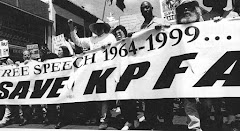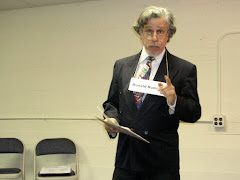While visiting London in 1999 to promote an installment of his memoirs, Henry Kissinger stormed out of a widely heard radio interview when the questioning turned to his complicity in war crimes. Jeremy Paxman, host of the Radio 4 program, had asked the former Secretary of State whether he felt like a fraud for getting a Nobel Peace Prize after plotting a coup in Chile and orchestrating slaughter in Cambodia. Kissinger fumed and denied everything, of course, charging that his host was woefully misinformed. Yet, later the same day he declined to show up for a BBC roundtable discussion.
As the century ended, Kissinger wasn't the only nervous member of the political old guard. Former Chilean dictator Augusto Pinochet was fighting extradition, while other potential defendants fretted about the precedent that might set. And the Clinton administration wasn't helping. In fact, its release of documents on Chile not only confirmed what many suspected – that the US actively promoted the coup against President Salvador Allende and sanctioned the subsequent repression – but also sparked a hailstorm of damaging revelations.
We still don’t know what the first President Bush knew or did while briefly serving as CIA chief in the mid-1970s, when Chilean foreign minister Orlando Letelier and his US co-worker Ronni Moffitt were assassinated in Washington, and Chile's intelligence arm, DINA, was sponsoring international terror. According to declassified documents, however, we do know that Kissinger, Nixon, and CIA Director Richard Helms ordered a coup even before Allende assumed office. Kissinger and Alexander Haig worked out the details, described in an October 15, 1970, memo.
"It is the firm and consistent policy that Allende be overthrown by a coup," wrote CIA Deputy Director of Plans Thomas Karamessines, who coordinated the operation. "We are to continue to generate maximum pressure toward this end utilizing every appropriate resource. It is imperative that these actions be implemented clandestinely and securely so that the USG and American hand be well hidden."
Two years later, the goal was achieved. In a victory report, Naval attache Patrick Ryan called September 11, 1972, "our D-day," noting that the coup "was close to perfect." In subsequent years, the State Department received detailed reports on the escalating death toll under Pinochet. Yet, another memo has Kissinger telling the general that the US is "sympathetic with what you are trying to do here."
In the late 1990s, Pinochet was kept under house arrest in England for more than a year, but was eventually released on medical grounds and returned to Chile. Although Chile’s Congress gave him immunity from prosecution, he was later indicted for kidnapping, torture, tax evasion, and responsibility for assassinations. But he died before conviction of any crime could be won.
If Pinochet could be prosecuted, the question arises: Why not Kissinger or those responsible for mass mayhem elsewhere? If more documents were declassified, the list of defendants would certainly grow. Even though he ultimately escaped punishment, the Chilean dictator's case helped peel away the facade of deniability, exposing some of the high US officials who provided weapons, training, financial support, and even direct guidance for some of the worst modern violations of political and civil rights. Is it any wonder the US backed out of an International Criminal Court (see footnote), established in part to prosecute powerful individuals when domestic courts fail to act?
Kissinger did squirm for a while, and even Bush I realized that he might not be immune. Predictably, the ex-president called the case against Pinochet "a travesty of justice." Even former Prime Minister Margaret Thatcher became edgy, making discreet inquiries to Britain's Interior Ministry on the likelihood of being arrested while traveling abroad. An old friend of Pinochet, the Iron Lady was worried about being charged as a war criminal for her actions in Northern Ireland and the Falklands.
The exposure of what amounts to war crimes by officials like Kissinger, though it usually comes decades late and rarely leads to prosecutions, does suggest that it may someday be possible to get the truth about recent schemes and schemers. For Clinton, meddling in Mexico and the Sudan, not to mention atrocities in Iraq and Kosovo, might prove equally damning if more of the story was revealed.
Since 9/11, Bush II has faced a similar problem: that covering up what he actually knew and did before the attacks – not to mention the truth about the rush to war in Iraq – could lead to embarrassing revelations about how and why the "war on terrorism" has been prosecuted. Unfortunately, it often takes a generation (and political convenience) to get beyond the veil of disinformation.
That apparently applies to events now unfolding in Georgia. According to the mainstream media, Russian-backed “separatists” in South Ossetia are resisting the Georgian government, which the US charges Russia with attempting to overthrow. The current conflict began on August 7 when Georgian forces bombarded South Ossetia, where a majority of people hold Russian passports. Russia responded, bombing targets in Georgia and sending troops into South Ossetia. Zalmay Khalilzad, US ambassador to the UN, immediately called the actions of Russian forces a "campaign of terror" and accused Russia of seeking “regime change.”
In the 1980s, Khalilzad led the charge in the Reagan administration to back the Mujahadeen in Afghanistan. Later, while working for the RAND Corporation, he worked on a gas pipeline in the region. And, as a member of the Project for a New American Century, he called for the removal of Saddam Hussein – in other words, regime change – using “a full complement of diplomatic, political and military efforts."
Russia insisted that it was protecting peacekeeping forces and civilians, and Russian Ambassador Vitaly Churkin called it a “humanitarian” campaign to block "ethnic cleansing” in South Ossetia, which declared its independence from Georgia in the 1990s and held a referendum in 2006. Vladimir Vasilyev, Chair of Russia's parliamentary Security Committee, went farther, accusing the US of orchestrating the current conflict. In remarks that have yet to be reported by US mainstream media, he noted, "The further the situation unfolds, the more the world will understand that Georgia would never be able to do all this without America.”
Thus far, any evidence of and possible motives for US involvement have gone unnoticed. But reports have circulated that mercenaries from other countries, including some Black fighters, are involved. The question, of course, is why. On that topic, CNN did provide some hint. The struggle in Georgia is important, the news outlet acknowledged, “for its importance in the oil
As Georgetown professor Charles King sees it, “the war began as an ill-considered move by Georgia to retake South Ossetia by force. Saakashvili’s larger goal was to lead his country into war as a form of calculated self-sacrifice, hoping that Russia’s predictable overreaction would convince the West of exactly the narrative that many commentators have now taken up.”
Michael Klare, author of Rising Powers, Shrinking Planet: The New Geopolitics of Energy, says the US is trying to use Georgia as an “energy corridor” to transport Caspian energy to the West without going through Iran or Russia. “Russia seeks to frustrate America's use of Georgia for this purpose, and uses Abkhazia and South Ossetia as daggers pointed at the jugular of the BTC pipeline,” he told the Institute for Public Accuracy. “When Saakashvili sought to drive the Russians out of these enclaves, the Russians struck back."
In a sense, history has come full circle. Thirty years after the US created a “trap” for the Soviet Union in Afghanistan a similar dynamic seems to have emerged. In mid-July, Georgian and US troops held a joint military exercise entitled "Immediate Response" in Georgia, and a spokesman for US European Command has confirmed that the US has "military trainers" and civilian contractors there. The Georgian army is US-trained and increasingly US-equipped; according to the Associated Press, thousands of its troops serving in Iraq have been flown back to Georgia at US expense. Yet any accusations that the US administration played a provocative role or has oil on its mind no doubt will be vigorously denied. Again the truth about any covert US activities is likely to remain buried for years.
Footnote
Officially, the US objection to the ICC was that, as the world's pre-eminent and most resented power, its citizens might be subjected to "frivolous" prosecutions. At first delaying its decision, US officials wanted a guarantee that no US citizen could ever be brought before the court. In a letter to European Union foreign ministers, Madeleine Albright, Secretary of State under Clinton, implied that if her country didn’t get its way, it might withdraw from international peacekeeping and humanitarian missions. Pentagon officials went further, threatening to pull forces out of Europe.
In December 2000, the US did sign. But shortly after taking office, Bush II revived the old objections, suggesting that the court could expose US soldiers and officials abroad to politically motivated war crimes prosecutions. After 9/11 and the military response in Afghanistan, that looked more like a possibility, so in May 2002 the administration informed the UN that it was nullifying its treaty signature. This was an unprecedented step; no other nation had ever before voided a signature on a binding international treaty.
Part One: Tales from the Covert Crypt: Afghanistan and the Congo
Part Two: The Covert Crypt: Mastering Misdirection






























